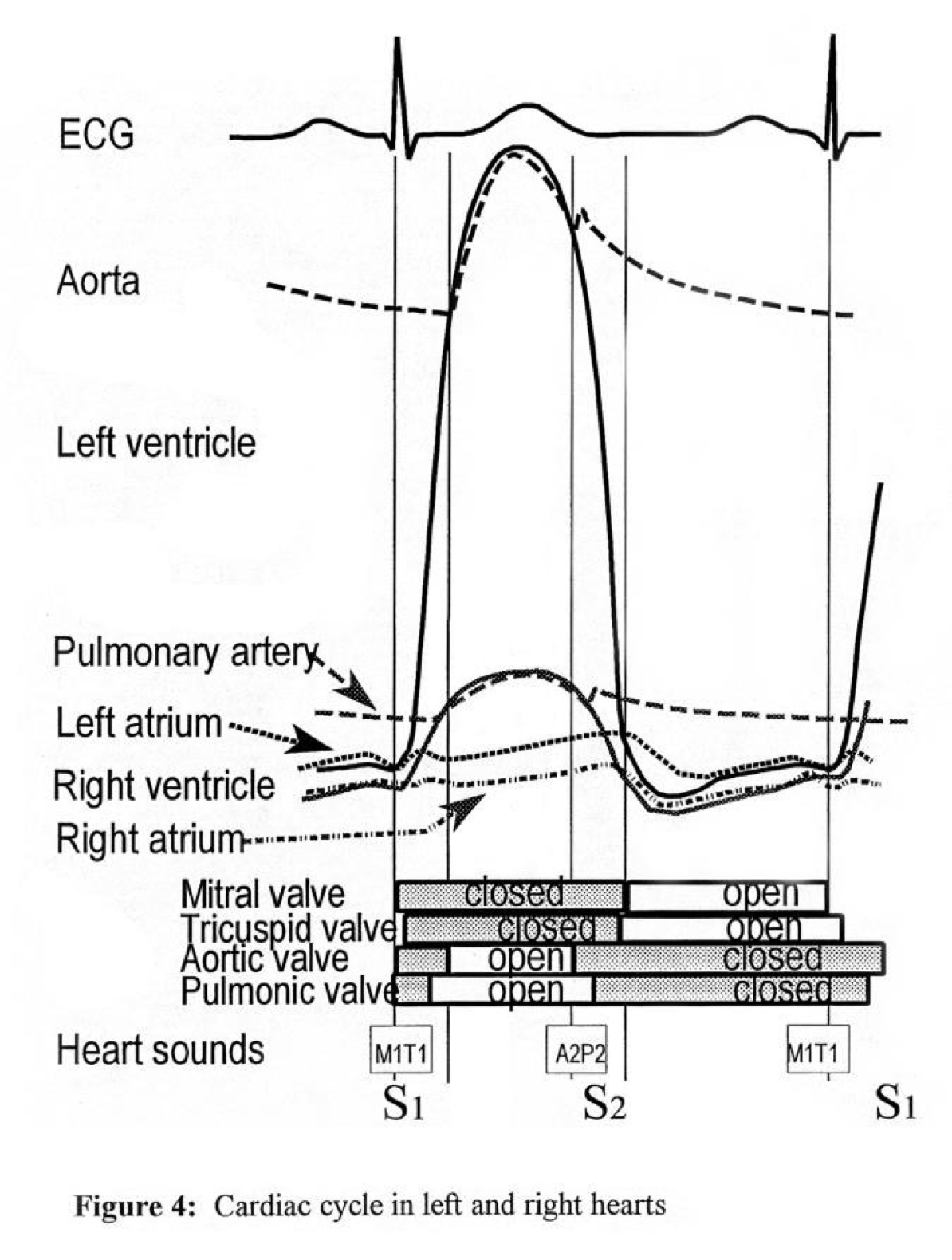• Four heart sounds - S1 best heard at mitral valve areas - S2 best heard at aortic and pulmonic areas - S3 or S4 - Murmur / Gallop
Normally audible heart sounds: 1st & 2nd HS
Added sounds: 3rd & 4th HS, pericardial friction rub (pericarditis), opening snap (m.s), mitral click(m.v.p) murmers
Extra Heart Sounds –S3 & S4
•Ventricular sounds, occur during diastole •normal in young patient (~ < 30 yo) •usually LV, rarely RV
•S3 ⇒ follows S2 •caused by blood from LA colliding w/”left over” blood in LV •associated w/heart failure.
•S4 ⇒ precedes S1 •caused during atrial systole •when blood squeezed into non-compliant LV •associated w/HTN
- S3& S4 are soft, low pitched
- Best heart w/bell, laid over LV, w/patient lying on L side (brings apex of heart closer to chest wall)
- Abnormal beyond age ~30
- When present, S3 or S4are referred to as “gallops”

Murmurs
-
Turbulent blood flow caused by diseased valve or if a large amount of blood flows through a normal valve.
-
Characteristics of murmurs suggest the cause of it (site, radiation, pitch, timing and the intensity) .
Murmurs: Sound created by turbulent flow across valves:
- Leakage(regurgitation) when valve closed
- Obstruction (stenosis) to flow when normally open
Systolic-Murmurs:
- Aortic stenosis, Mitral regurgitation (Pulmonary stenosis, Tricuspid regurgitation)
Diastolic-Murmurs:
- Aortic regurgitation, Mitral stenosis (Pulmonary regurgitation, Tricuspid stenosis)
Y Pitch; the greater the pressure gradient the higher the pitch(MS m.» low-pitched, AR m.» high-pitched)
Timing; in relation to the1st and the 2nd HS
Systolic; time between 1st and the 2nd HS, could be mid-systolic (AS), pansystolic (MR).
Diastolic; time between 2nd and the 1st HS, can be divided into three phases. Early (AR), Mid-diastole (MS), Presystole.

Examples of murmurs;
- Systolic; MR,TR, AS, PS.
- Diastolic; MS,TS, AR, PR.
- Continuous; Patient Ductus Arteriosus (PDA)
Document Heart Sounds
Document above locations for: S1, S2 - Rate and rhythm - Splitting sounds - Murmurs or any extra sounds like S3, S4 - Gallops - Rubs
Abnormal Heart Sounds
Murmurs
- Stenosis
- Regurgitation
- Shunt
- “Whooshing”
Pericardial friction rubs
#### - A scratchy, scraping sound that gets louder when patient exhales and leans forward.
- Listen over the 3rd intercostal space at the left
sternal border
Note y
Site; area over which a murmur is best heared depends upon the valve of origin and the direction of the blood flow. (Mitral m.at apex, aortic m.at right 2nd ICS)
Radiation; occurs along line of blood flow. (AS» neck, AR» left sternal edge.)